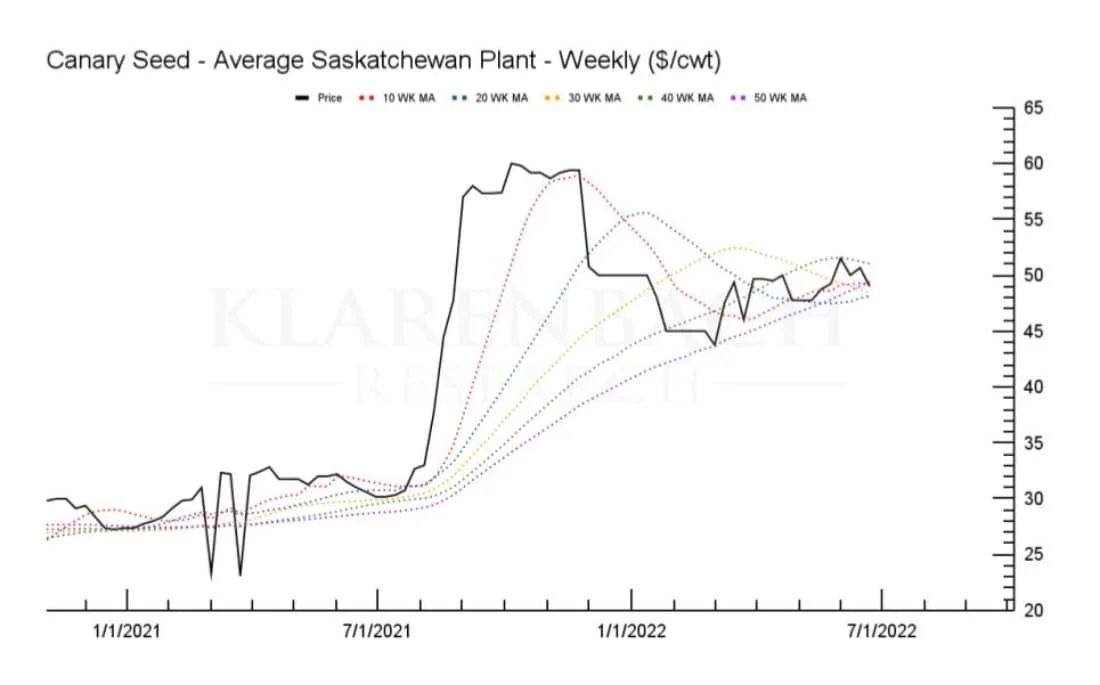The Klarenbach Report Jun 28
By Trent Klarenbach
Is Canary Seed still itchy?
Silly question.
I have a complicated relationship with Canary Seed.
No crop has had as significant of an impact on my life or those close to me.
Canada has often been in conversation, beginning with Reinhold Nunweiler introducing Canary Seed to Canada and the folklore that circulated in the ancient wooden elevators and beer parlours of neighbours, capitalizing on the high prices after years of storage, sometimes long enough for a tree to grow in front of the bin door, to friends making careers by way of processing and exporting.
The complications began when I drove directly from the university with a repaired SED Systems Grain Loss Monitor to a neighbour’s Canary Seed field, finding a Massey Ferguson 860 with the straw walkers plugged full due to a broken Straw Storm belt.
Demonstrating leadership, my father pulled the straw from the bottom, enduring the total onslaught of canary seed dust. At the same time, this university student opened the top lid above the walkers and pushed it down from above.
I did not know the proper name of the triangle shark-tooth-shaped straw walker part that was embedded into my calf, adding both short-term pain and long-term memory by way of a permanent scar to the misery; however, I improvised with a colourful adjective-filled alternative that would have curled the toes of my English 110 professor. She was a fine and proper lady, and our relationship was unaffected by her absence.
We made a unanimous declaration never to grow or combine Canary Seed again; however, the crop owner was undeterred by the itchiness and continued to seed and harvest in the following years.
Years later, while searching for respite from the tyranny imposed by the Canadian Wheat Board, we decided to grow Canary Seed.
As my good friend, Bill since told me, “Never is a long time, Trent.”
A remarkable discovery, unexplained by plant science and better explained by psychology, the itchiness was inconsequential to a grower’s mood or temperament.
Not so much for the co-workers. They hated every minute of it.
I also noticed another phenomenon that, along with ownership, Canary Seed itchiness is a function of price.
Relatively high prices made one more tolerant of the itch, often prompting one to embrace the fine barbed dust particles without even lathering oneself with baby powder.
While relatively low prices made one question the purpose of both the seed and the bird.
My theory is that the recent high prices nullify the itchiness.
Consider 45-cent Canary Seed being considerably more tolerable than 20 cents, and it is much less so than at 57 cents.
When will Canary Seed become itchy again?
What does the chart tell you?
Trent Klarenbach, BSA AgEc, publishes the Klarenbach Grain Report and the Klarenbach Special Crops Report, which can be read at https://www.klarenbach.ca/

